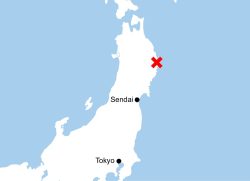Fukuoka: Concierge Serve Up Food Stall Info to Foreign Visitors; Yatai Owners Lure Them with High-Quality Dishes
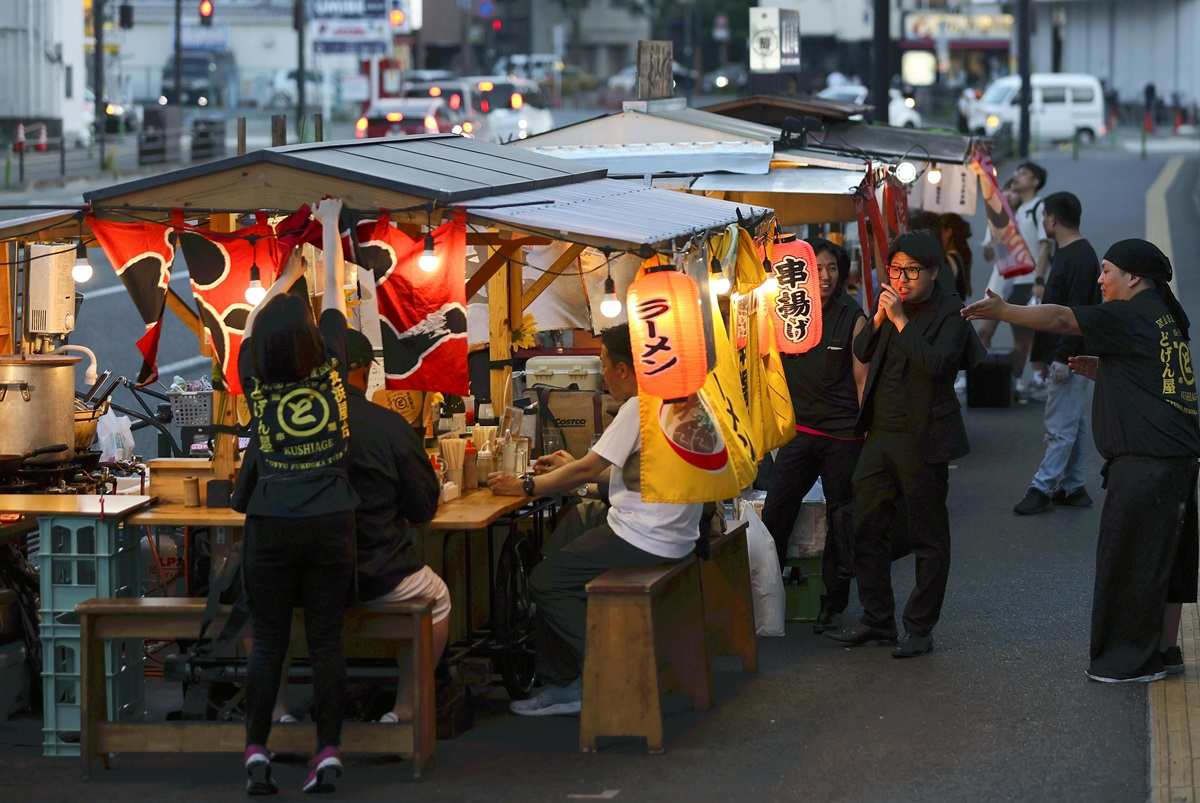
Customers flock to a group of yatai open-air food stalls in Nagahama, Fukuoka City, on the evening of June 13.
16:30 JST, July 27, 2024
FUKUOKA — A “yatai concierge” service that introduces the charms of Fukuoka’s open-air food stalls to foreign visitors has started at Fukuoka Airport’s international terminal to encourage more tourists to try this dining experience.
The service, which is run by the Fukuoka city government, began on June 27 in response to the recent surge in inbound visitors.
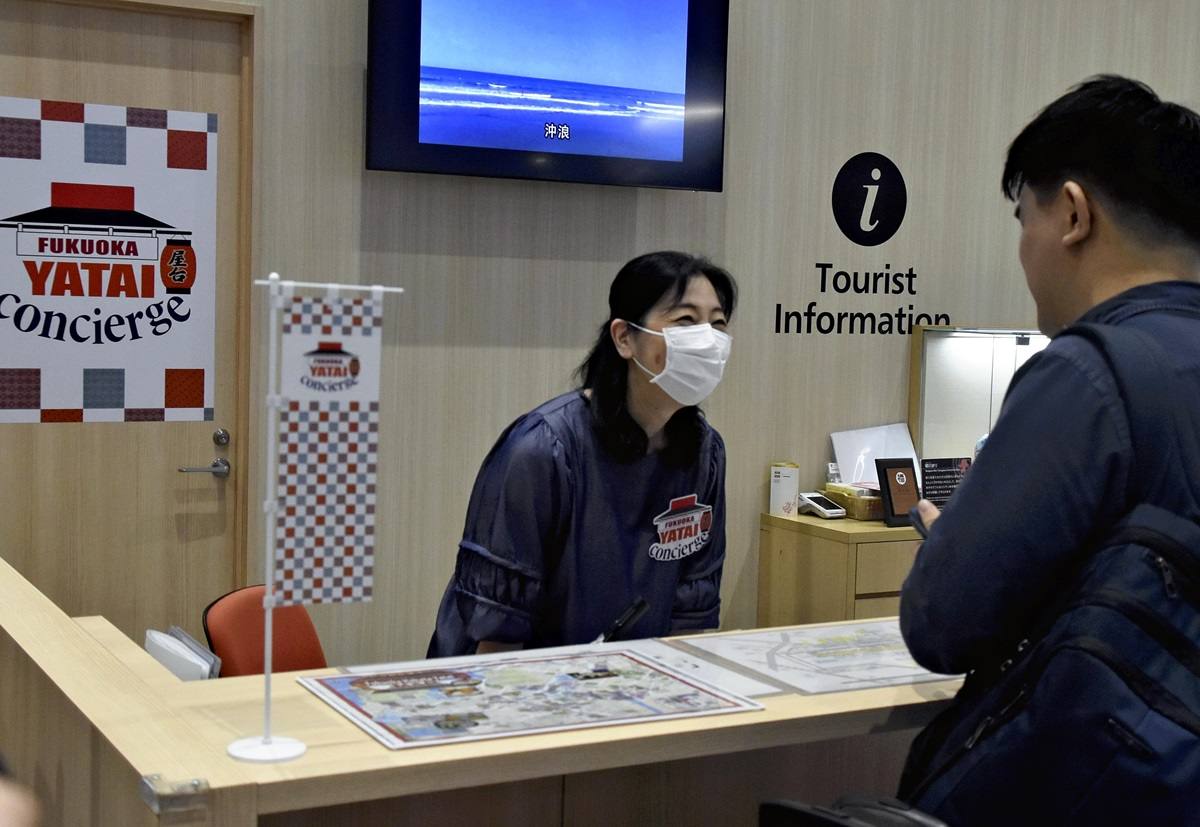
Yatai concierge Keiko Toyoshima, left, provides information to a foreign tourist.
The yatai concierge corner has been set up at a tourist information counter at the terminal’s arrival lobby. Staff stationed at the counter explain how to order meals at the yatai and other etiquette by showing materials and maps written in English. They also recommend yatai that suit the preferences of visitors.
“Fukuoka has such a rich variety of these mobile stalls,” said Keiko Toyoshima, a member of the concierge staff. “I want to convey what makes these yatai special to many people.”
On-site training
On the evening of June 24, two female staff members from the information desk came to watch yatai preparing to open on a footpath in front of the city’s fresh fish market in the Nagahama district. The two women were there as part of their training to work as yatai concierges at the airport.
The women sampled various foods served at a stall and talked directly with the operator. They confirmed that the stall has an English menu and that families with children are “very welcome” to dine there.
“This reinforced to me that yatai are places where you get a real feel for Fukuoka,” said Seiko Mine, one of the tourist information counter staff. “In the past, I’ve often recommended that tourists visit places such as Dazaifu, Nakasu or Ohori Park, but now these charming yatai are another option.”

Home of Nagahama ramen
Many yatai in Fukuoka opened for business soon after the end of World War II. At their peak in the 1960s, more than 400 stalls were operating in the city.
Although this number declined over the following years, the city government decided on a plan to turn areas where yatai were concentrated into tourist attractions and introduced an open application system for yatai operators in 2013.
The city promoted Tenjin, Nakasu and Nagahama as the three main yatai districts of Fukuoka. Although a growing number of stalls in Tenjin and Nakasu quickly gained popularity and often had lines of people waiting to dine there, the recovery of the Nagahama district took longer than expected.
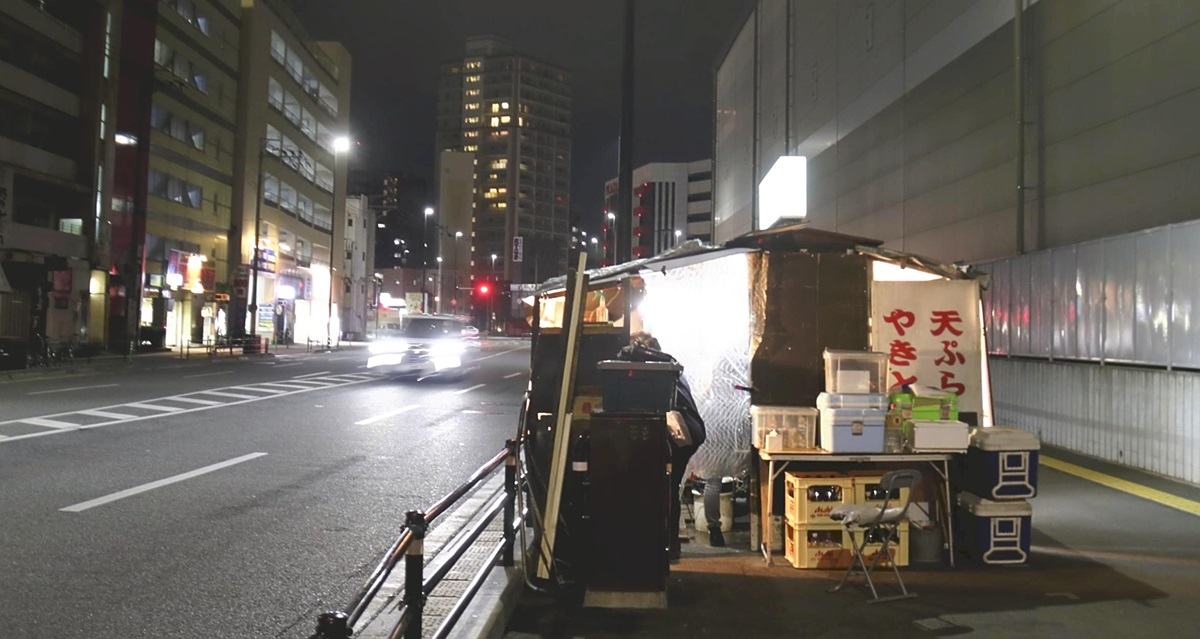
Yatai customers were scarce in Nagahama in January 2019.
Nagahama is said to be the birthplace of Nagahama ramen, which is famed for its very thin noodles and for kaedama — an extra serving of noodles added to the remaining broth. However, Nagahama is some distance from major business districts, so for several years, only one yatai was operating there. Besides, it opened on an irregular basis.
The city government boosted its promotion of the Nagahama Yatai Street for about one year, which culminated in seven stalls coming forward in the fourth round of application invitations. These yatai opened in June 2023.
The city government decorated stairs and walls in the nearest municipal subway station, Akasaka Station, with noren shop curtains and lanterns, and held a limited-time stamp collection rally and contests offering original merchandise as prizes. The city harnesses the Line messaging app to allow users to check whether certain yatai are open for business.
The combination of these efforts has been somewhat successful in attracting customers to Nagahama, according to the city government.
Popular stalls emerge
One yatai in Nagahama that has developed a loyal following is Mentai Chudoku, which serves dishes featuring mentaiko cured cod roe. There is often a line of customers before the stall opens.
Tatsuji Yonemitsu, who operates Mentai Chudoku, was initially skeptical about whether customers would come to his stall, but he decided there was only one way to overcome the possible disadvantage of his location.
“I had to get people to come to Nagahama specifically to eat at the yatai,” Yonemitsu said.
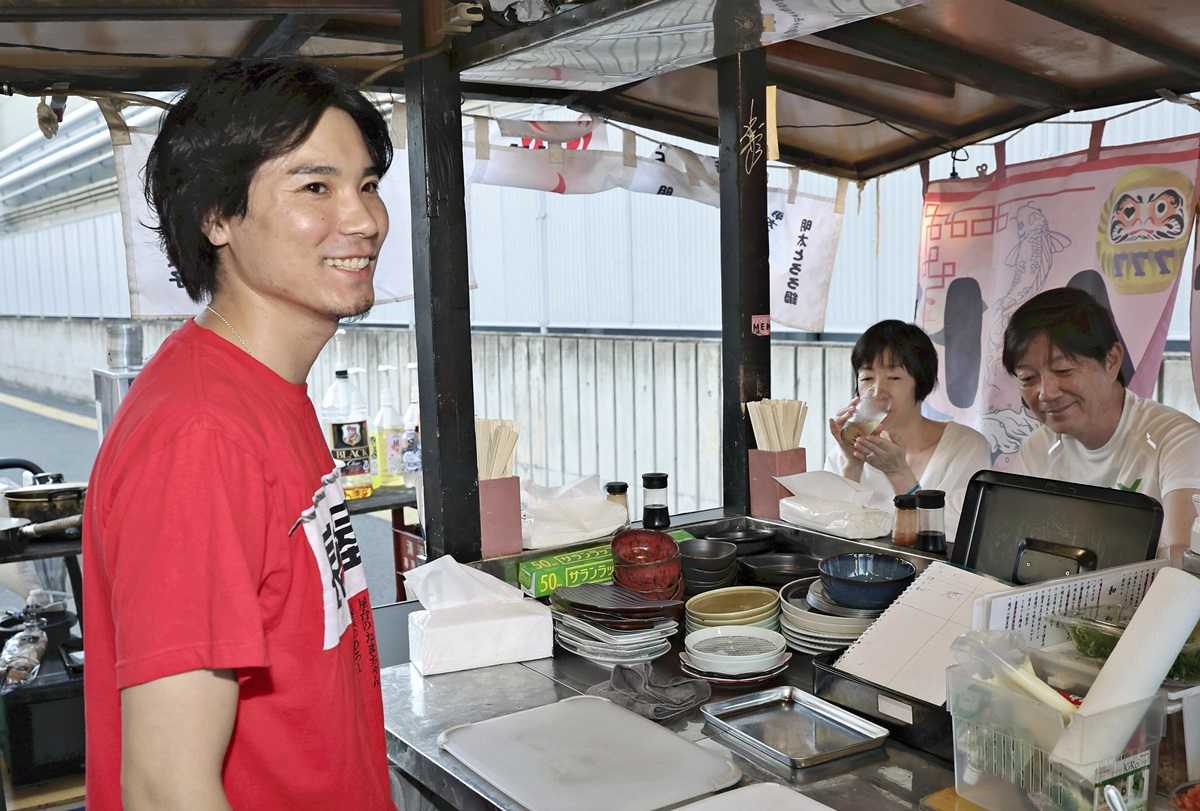
Yatai operator Tatsuji Yonemitsu, left, talks to customers at his mobile stall on June 18.
He honed his cooking skills to deliver high-quality meals and increasingly used social media to spread information about his stall.
The first yatai to specialize in mentaiko dishes quickly gained popularity among diners. “The food is delicious,” one said, while another added, “The stall has a good atmosphere.”
Daisuke Tosu, head of a group comprised of Nagahama yatai and other business operators, believes the district can go from strength to strength.
“The daily preparations and cleaning up are hard work, but being close to the customers is one major attraction of yatai. We’ll work together with other shops to bring even more energy to Nagahama,” Tosu said.
Related Tags
"Features" POPULAR ARTICLE
-

Students Recreate 19th-Century Bento Boxes Made for Ino Tadataka’s Survey Team in Hot Spring Town on Nakasendo Road
-

Santa Claus Delivers Christmas Presents to Penguins at Aquarium in Japan’s Nagasaki Prefecture
-

Sumo Restaurant in Tokyo Teaches Foreign Visitors About the Ancient Sport, with Bouts Between Retired Rikishi
-

Autonomous Passenger Ship Connects Mainland with Remote Island in Seto Inland Sea; World’s 1st Commercially Operated Autonomous Vessel
-
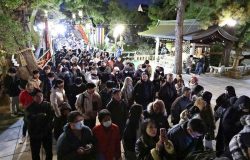
Osaka’s Sumiyoshi Taisha Shrine Bustles with New Year’s Visitors
JN ACCESS RANKING
-

As Chinese Tourists Shun Japan, Hotels and Stores Suffer
-

Osaka-Kansai Expo’s Economic Impact Estimated at ¥3.6 Trillion, Takes Actual Visitor Numbers into Account
-

Japan Govt Adopts Measures to Curb Mega Solar Power Plant Projects Amid Environmental Concerns
-

BOJ Gov. Ueda: Highly Likely Mechanism for Rising Wages, Prices Will Be Maintained
-

Economic Security Panels Debate Supply Chains, Rare Earths; Participants Emphasize Importance of Cooperation Among Allies









